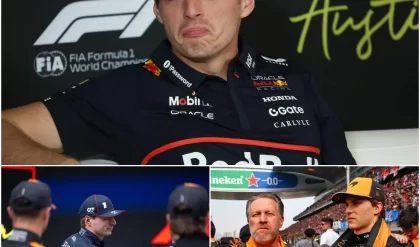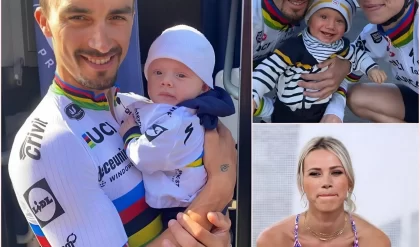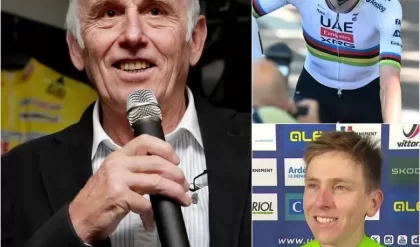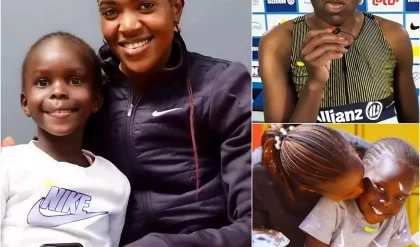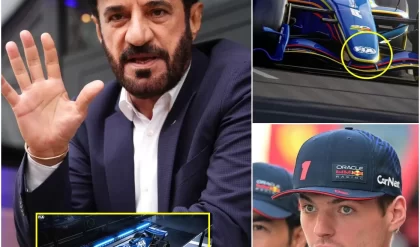The Amazing Journey
Graham Lee, the legendary jockey who conquered the world’s most prestigious races, has long been celebrated for his triumphs in the saddle. From the thunderous roar of the Grand National to the elegance of Royal Ascot, Lee’s career was a tapestry of victories that amassed millions in prize money and etched his name into racing history. Yet, in a cruel twist of fate, a routine fall stripped him of the physical freedom he once commanded. Today, nearly two years after that life-altering accident, Lee sits in a wheelchair, his spirit unbroken but his body forever changed. In a recent, deeply moving interview, he revealed the profound depth of his loss—not in titles or trophies, but in the simple, irreplaceable act of embracing his wife Becky. “I’d give up every winner I ever rode to get up out of this chair and hug my wife,” he confessed, a sentiment that has touched hearts across the racing world and beyond.
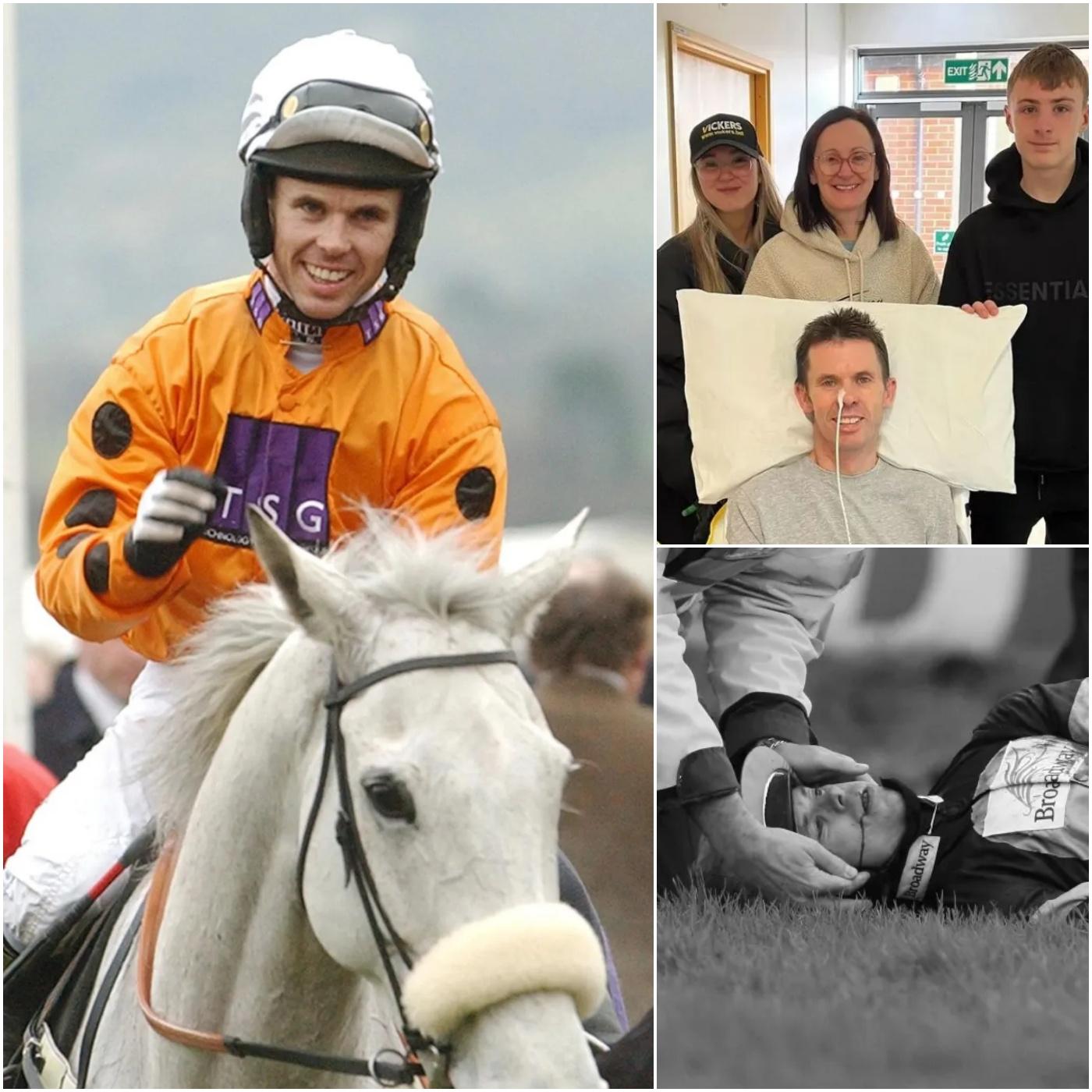
From Irish Fields to Racing Glory
Born in Galway, Ireland, in 1975, Graham Lee’s path to jockey stardom was paved with grit and an innate connection to horses. He began riding as a teenager, honing his skills in the demanding Irish racing scene before crossing the Irish Sea to chase bigger dreams in Britain. Lee’s versatility set him apart: he excelled in both National Hunt jumping and the precision of Flat racing, a rare feat that showcased his adaptability and talent.
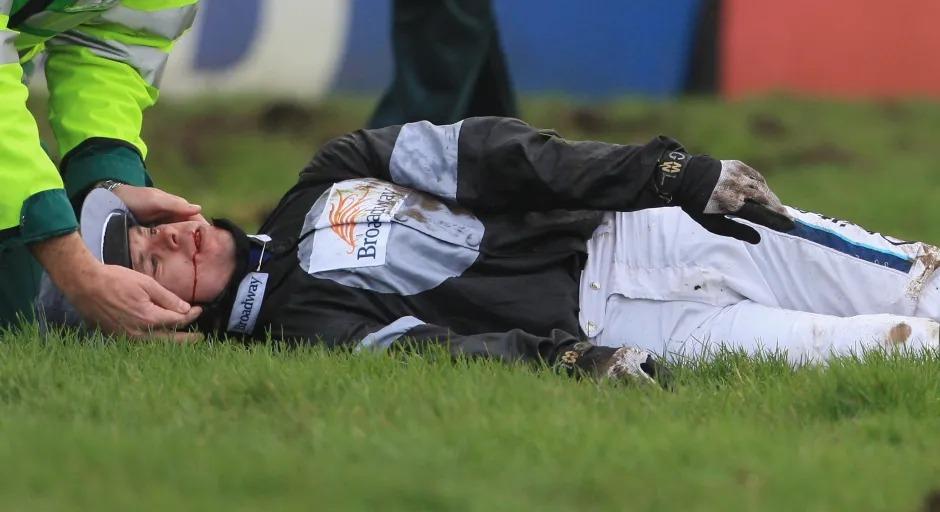
His breakthrough came in the jumps arena, where he became a household name. In 2004, aboard the Ginger McCain-trained Amberleigh House, Lee navigated the grueling 4.5-mile Aintree course to claim victory in the Grand National—a race synonymous with endurance and danger. The win was emotional; McCain, trainer of the immortal Red Rum, handed Lee the reins, and the Irishman delivered under immense pressure. The following year, 2005, Lee dominated Cheltenham Festival as leading jockey, securing the World Hurdle (now Stayers’ Hurdle) on Inglis Drever for owner Graham Wylie. These triumphs alone propelled him to the pinnacle of jump racing.
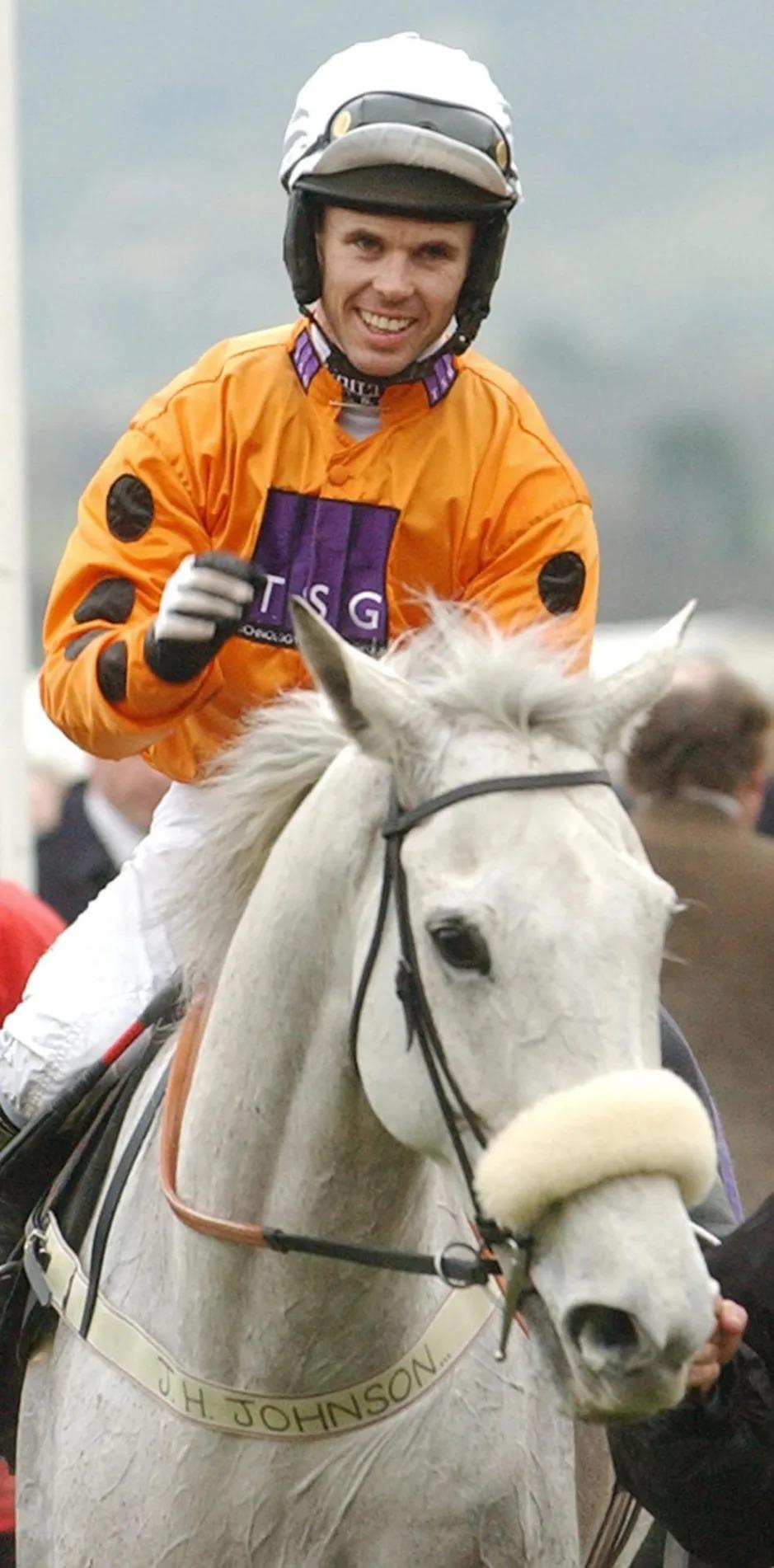
But Lee wasn’t done. Transitioning to the Flat in his later years, he added even greater luster to his resume. In 2015, he guided Trip to Paris to an unforgettable victory in the Ascot Gold Cup, the pinnacle of staying races over two miles. This made him the only jockey in history to win both the Grand National and the Gold Cup—a dual achievement that underscored his mastery across disciplines. Over his 30-year career, Lee rode more than 1,800 winners, amassing prize money exceeding £10 million. His quiet demeanor and sportsmanship earned him universal respect, but it was his ride-or-die commitment that defined him.
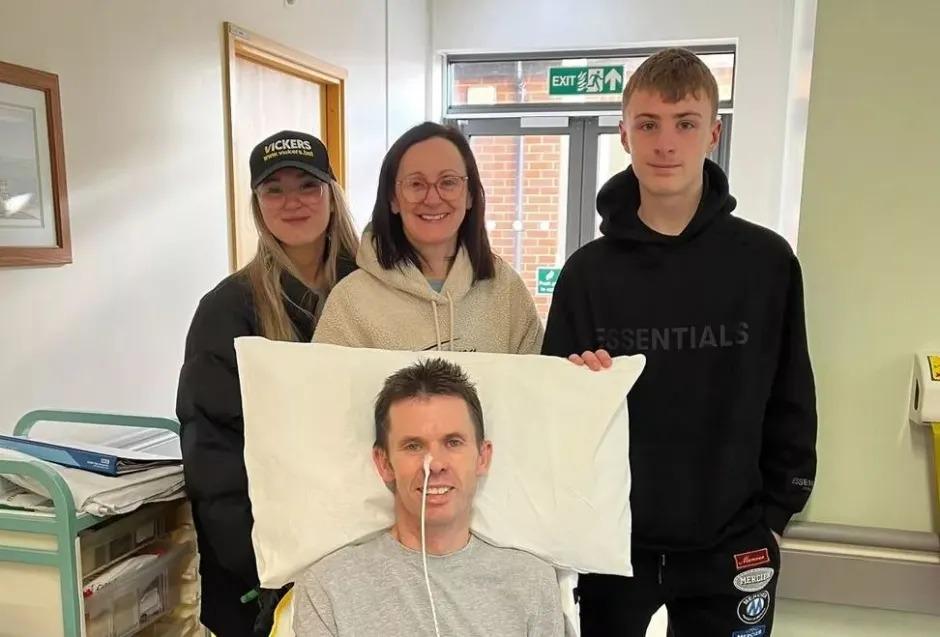
A Fall That Shattered Everything
The incident that redefined Lee’s life occurred on November 21, 2023, at Newcastle Racecourse—a venue far from the high-stakes spectacles he knew so well. Riding the Flat sprinter Ben Marduk in a routine handicap, Lee was unseated as the stalls opened, tumbling just five feet to the ground. What followed was a nightmare: an unstable cervical fracture that severely damaged his spinal cord, leaving him paralysed from the neck down.
Rushed to the hospital, Lee spent weeks in intensive care before beginning the long road of rehabilitation. The racing community, stunned by the news, rallied immediately. A JustGiving campaign launched by his daughter Amy raised over £200,000 in weeks, funneled to the Injured Jockeys’ Fund (IJF) to support his care. Tributes poured in from fellow jockeys, trainers, and fans, with figures like Frankie Dettori and AP McCoy sharing messages of solidarity. By early 2024, Lee was pictured smiling in his wheelchair, visiting with old colleagues like trainer Henrietta Knight, a sign of his unyielding positivity amid the pain.
Ironically, the fall happened not over jumps—where risks are inherent—but in the relative safety of a Flat start. “It’s mad. There are no rules,” Lee reflected recently. “Think of the falls I took—every jump jockey gets them—yet this happened in the stalls, not even in a race.” The accident robbed him of movement below the neck, turning everyday actions into impossibilities.
The Heartbreaking Longing for a Simple Embrace
As October 2025 unfolds, Lee’s story has taken an even more poignant turn. In an intimate Racing TV documentary aired on October 13, the 49-year-old opened up about the emotional toll of his paralysis. Speaking from the Matt Hampson Foundation’s Get Busy Living Centre in Leicestershire—where he receives physiotherapy and support—Lee bared his soul to friend and former jockey Niall Hannity.
The moment that has resonated most is his raw admission about family. With tears in his eyes, Lee said: “Do you know I would give up every winner I ever rode to get up and walk out of this chair and hug my wife and hug Amy, hug Robbie.” He elaborated on the small devastations: “I can’t reach my ear. I can’t reach my forehead. I can’t give my wife a cuddle. When Rob plays a football match, I can’t put my arm round him and say ‘well done kidda’ or watch Amy perform in her musical theatre and give her a hug and say ‘that was class.'”
Married to Becky for over two decades, Lee spoke of the guilt he feels for her and their children, Amy and Robbie. “All our lives have changed hugely but I feel more bad for Becks, and for Amy and Robbie, than me,” he shared. Becky, in turn, praised the “incredible” support from the IJF, who have been “here anytime, night and day.” The couple’s bond, forged through racing’s highs and lows, now faces its greatest test—not with resentment, but with quiet resolve.
This confession has struck a chord, reminding the world that behind every champion is a human yearning for connection. It’s not the medals Lee misses most, but the warmth of a hug—the ultimate prize money can’t buy.
A Lifeline from the Racing Family
The outpouring of love for Lee has been nothing short of extraordinary, transforming his tragedy into a beacon of communal strength. The IJF, with its network of rehabilitation centers like Jack Berry House in Malton, North Yorkshire, has been instrumental. Opened in 2015, the facility—where Lee now spends time—offers specialized therapy and a “homely” environment for injured riders. “Graham is just one of the nicest people in the world and he doesn’t understand why people care about him,” said clinical lead Tilly Cumming.
Fundraising efforts continue to soar. In May 2025, The Good Racing Company donated £40,000 from its Graham Lee Racing Club, a membership scheme tied to a charity horse named We’ve Got This. The presentation was tearful: Lee was reunited with Trip to Paris, the equine partner from his Gold Cup glory, in a moment that symbolized continuity amid loss. Earlier cycles by trainers like Mark Johnston and Richard Fahey raised thousands more, blending humor and heart at events attended by racing icons.
Lee himself remains “humbled and grateful,” as he put it in February 2024. “I’ve been overwhelmed by the unbelievable support,” he added, crediting the sport’s tight-knit family. From charity auctions to emotional visits, the racing world has ensured Lee and his family want for nothing.
Reflections on Legacy and Living in the Moment
Looking back, Lee wishes he’d savored his successes more. “I was very fortunate in my career to ride big winners but at the end of the day, it’s only horses running around a field,” he mused in the documentary. The accident, he says, has gifted him a “fresh perspective”—a call to “live in the moment” rather than chase the next horizon.
In July 2025, marking the tenth anniversary of Jack Berry House, Lee attended a rainy celebration, surrounded by supporters like Sue Hide, widow of jockey Edward Hide. It was a reminder of the center’s role: not just healing bodies, but mending spirits. “The only positive thing to come from this injury is I’ve met some of the most amazing people on this planet,” Lee told Racing Post.
His legacy? Far beyond the saddle. Lee’s story of sacrifice and love has humanized a sport often defined by speed and spectacle. As he navigates paralysis with humor and hope, he inspires others to value what truly matters: the people we hold dear, even if only in memory.
Graham Lee’s amazing journey—from Grand National hero to wheelchair warrior—is far from over. In sharing his heartache, he has given the world a lesson in grace, proving that true victory lies not in crossing the finish line, but in the arms of those we love.
